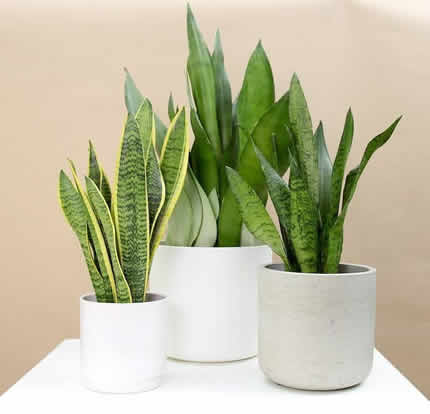Snake Plant vs Rubber Plant: Which Plant Wins in Air-Purifying Conditions?

When it comes to tough, stylish plants that can actually improve your air quality, the Snake Plant and the Rubber Plant both make strong cases.
They’re popular, attractive, and surprisingly resilient — but which one truly purifies better, adapts faster, and looks sharper while doing it?
Let’s compare these two green powerhouses across all the key categories that matter for modern homes.
Table of Contents
Air-Purifying Power: Which Filters More?
Both of these plants are known for their ability to reduce airborne toxins — but one has more science behind it.
Snake Plant
-
Filters out formaldehyde, benzene, trichloroethylene, and xylene
-
Continues releasing oxygen at night — rare for houseplants
-
Featured in the NASA Clean Air Study for VOC removal

Rubber Plant
-
Absorbs carbon monoxide, formaldehyde, and airborne mold spores
-
Strong stomatal uptake makes it effective in humid areas
-
Less researched, but highly effective in real-world tests
The Snake Plant edges ahead thanks to lab-confirmed performance and unique night-time oxygen release.
🧪 Winner: Snake Plant
Adaptability and Placement Options
Where and how you can place a plant matters — especially in homes with uneven light.
Snake Plant
-
Thrives in everything from low light to full sun
-
Compact varieties fit shelves, corners, or countertops
-
Forgiving of missed watering and temperature changes
Rubber Plant
-
Prefers bright, indirect light — may drop leaves in low light
-
Can grow large quickly — may outgrow small rooms
-
Sensitive to cold drafts and rapid environmental changes
For versatility and placement options, the Snake Plant is the clear winner.
🌤 Winner: Snake Plant
Care and Maintenance Needs
Here’s a breakdown of what it takes to keep each plant healthy.
| Feature | Snake Plant | Rubber Plant |
|---|---|---|
| Watering | Every 10–14 days | Every 7–10 days |
| Light Needs | Low to bright indirect | Bright indirect only |
| Humidity | Tolerates dry air | Prefers moderate humidity |
| Difficulty | Extremely low-maintenance | Moderate; needs monitoring |
The Snake Plant is a “set it and forget it” plant. The Rubber Plant requires more attention and space management.
🛠 Winner: Snake Plant
📘 Explore deeper:
→ Snake Plant Care Guide
📘 Explore deeper:
→ Rubber Plant Care Guide
Visual Impact and Style
Both plants bring strong visual energy — but their styles couldn’t be more different.
Snake Plant
-
Tall, upright leaves
-
Fits sleek, minimalist, or architectural interiors

Rubber Plant
-
Broad, glossy leaves in rich green or burgundy
-
Adds depth and richness to boho or modern spaces
The winner here depends on your aesthetic preference. If you want bold and leafy, go Rubber Plant. If you want clean and vertical, Snake Plant is ideal.
🎨 Tie
Pet Safety
This one is important for pet owners.
Snake Plant
🚫 Toxic to cats and dogs — ingestion can cause nausea.
Rubber Plant
🚫 Also toxic — sap may irritate the mouth and stomach.
Unfortunately, neither plant is safe for pets — keep both out of reach.
🐾 Tie (Both Toxic)
Final Verdict: Which One Should You Choose?
If air purification, ease of care, and flexibility matter most — Snake Plant is the winner.
It’s beginner-proof, proven to clean the air, and works in nearly any room.
If you’re after a larger, more dramatic plant and don’t mind the extra care, the Rubber Plant brings bold beauty and high visual impact.
Whichever you choose, both plants support cleaner indoor air and enhance your space with natural presence.
Check out our top plant accessory picks to help your plant thrive.
Thanks for reading! I'm Michael — houseplant fanatic and your Pinterest plant guide.
Follow me on Pinterest for fresh updates 🌿



